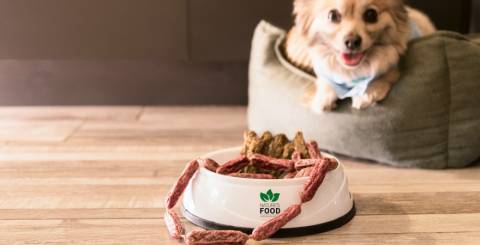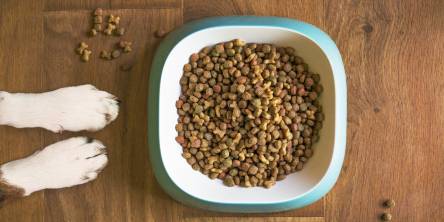Top Nutritional Trends for Dog Food: What Pet Owners Need to Know

Key Takeaways
- Understanding the shift towards natural and whole ingredients in dog food.
- Insights into the benefits of grain-free and high-protein diets for dogs.
- How to recognize credible sources of nutritional information for your pet.
- Tips on choosing the right dog food based on your dog’s specific health needs.
The Rise of Natural Ingredients in Dog Food
In recent years, there has been a significant shift in the dog food industry towards the use of natural and whole ingredients. Pet owners are becoming increasingly aware of the benefits of feeding their dogs food that mimics their ancestral diets. This trend is driven by studies that suggest natural ingredients can lead to better overall health and longevity in pets. Discussions, such as Dr. Marty Nature's Blend Reviews, reveal that many pet owners are noticing improvements in their dogs’ well-being, such as shinier coats and increased energy levels, after switching to natural ingredient-based foods.
One example of this movement is the rise of raw and minimally processed dog foods. These foods often include fresh meats, vegetables, and fruits, providing a rich source of nutrients directly from their natural state. They aim to deliver nutrition in its purest form, without preservatives or artificial additives that can be found in many commercial dog foods. However, while these trends are promising, pet owners should always consult with their veterinarian before making significant changes to their dog’s diet to ensure it aligns with their specific health needs.
Grain-Free and High-Protein Diets: Are They Beneficial?
Grain-free and high-protein diets have gained substantial popularity among dog owners. The idea behind these diets is to provide dogs with more protein and fewer carbohydrates, aligning their intake more closely with that of their wild ancestors. High-protein diets are particularly beneficial for active dogs, working breeds, and those requiring muscle maintenance and repair.
However, it's important for pet owners to understand what they're replacing grains with in these diets. For those considering a grain-free diet, it's important to note that grain-free doesn't necessarily mean carbohydrate-free. Many grain-free foods substitute grains with other carbohydrate sources like potatoes or legumes. Therefore, reading labels and understanding ingredients is vital. Ensuring a balanced intake of protein, fat, and carbohydrates is essential to avoid potential nutritional deficiencies.
Understanding Nutritional Labels
Navigating dog food labels can be daunting, but it is essential for making informed decisions about your pet’s diet. Key elements on the label include the guaranteed analysis, ingredient list, and any nutritional adequacy statements. The guaranteed analysis provides information on the nutrient content, such as protein, fat, and fiber levels, which are crucial for understanding the nutritional value of the dog food.
Understanding common terms like “meal” and “by-products” can also help in selecting high-quality foods. For instance, “chicken meal” is a concentrated source of protein, whereas “chicken by-products” might include less desirable parts of the animal. For more details, refer to guides on reading dog food labels offered by reputable sources such as the American Kennel Club. Being informed about these terms can help in making better choices for your pet's nutrition.
How to Determine the Best Food for Your Dog's Specific Needs
Every dog is unique, and their nutritional needs can vary based on factors like age, breed, activity level, and health status. For instance, growing puppies require more protein and calories compared to adult or senior dogs. Puppies need higher levels of certain nutrients to support their rapid growth and development, while senior dogs might need foods that are lower in calories but higher in specific nutrients like omega-3 fatty acids to support joint health.
Dogs with specific health conditions might benefit from therapeutic diets as prescribed by their veterinarians. For example, dogs with kidney issues may require a diet lower in protein and phosphorus, while those with skin allergies might benefit from diets rich in omega-3 fatty acids. Consulting with a veterinarian is the best way to determine the most suitable diet for your dog. They can provide tailored recommendations based on your dog’s needs and current scientific research to ensure optimal health and well-being.
DIY Dog Food: Pros and Cons
With the increasing focus on natural ingredients, some pet owners are exploring the option of preparing homemade dog food. While this can ensure quality and control over ingredients, it also comes with challenges. Balancing the nutrients in home-prepared meals requires careful planning and often supplementation.
Homemade dog food allows pet owners to avoid preservatives and fillers found in some commercial pet foods. However, the downside is that it’s easy to miss out on essential nutrients unless the diet is carefully formulated. Pet owners interested in DIY dog food should work with a veterinary nutritionist to create balanced recipes that meet their dog’s nutritional needs. This collaboration ensures that homemade diets can be as nutritious as possible while being safe and effective for their pets.
Recognizing Trusted Sources of Information
In the age of the internet, it's easy to find pet nutrition advice, but not all sources are credible. Governments and academic institutions, such as veterinary schools, offer reliable information based on the latest scientific research. Peer-reviewed journals and publications from established pet health organizations are also trusted sources. Reliable information helps pet owners make better dietary choices for their pets, avoiding misinformation that could lead to poor health outcomes.
Ensure any blog or website offering advice is authored by qualified professionals. Websites that provide thorough, evidence-based information and are affiliated with recognized institutions tend to be more reliable. Beware of sites that heavily promote products without backing their claims with scientific evidence, as they might prioritize sales over the well-being of your pet. Cross-referencing information from multiple credible sources can also provide a more balanced understanding of pet nutrition.
Conclusion
Choosing the right dog food is essential for your pet’s health and well-being. By staying informed about current nutritional trends and understanding your dog’s specific needs, you can provide them with the best possible diet. The rise of natural ingredients, grain-free, and high-protein diets highlights a significant shift towards better nutrition for pets. Additionally, comprehending dog food labels and consulting with professionals ensures that your choices are well-informed and beneficial.
Remember, when in doubt, always consult a trusted veterinarian to guide your decisions. Your loyal companion relies on you for their nutrition, so make choices that support a long and healthy life together. A well-balanced diet tailored to your dog's unique needs can enhance their quality of life, ensuring that they remain happy and active for years to come.
Similar Articles
When it comes to your pet’s safety, a custom pet ID tag is more than just an accessory—it’s a lif
Making the holiday season special for your pets is not just a treat for them but also a joy for you. “Paws and Claus” offers a delightful guide to ensure your furry friends are an integral part of the festive fun.
Just like humans, pets can have a predisposition to some health issues. Find out how a pet DNA test can help you understand what health problems can await your furry friend.
The moment you bring home a puppy from Snowy Pines white labs is like bringing in happiness, smartness and a lot of energy at that moment in time. These great animals are much more than only animals; they are best friends that one can ever have with great capability in terms of intelligence and bonding
Discover essential pet supplies for new owners! From feeding and grooming to safety and training, this guide covers everything to ensure your pet’s happiness.
Is dog training a necessity or a luxury? Learn why training is crucial for a harmonious bond with your canine companion
Freeze-dried dog food is a relatively new player in the pet nutrition market. Unlike traditional kibble, freeze-dried food retains the nutritional value of fresh ingredients through a unique preservation method
Pets are not simply creatures; they are treasured individuals from our families, meriting the most ideal consideration. A comprehensive way to deal with pet consideration perceives that their prosperity envelops something beyond actual well-being. It considers their psychological, profound, and social requirements too
When it comes to taking our beloved furry friends for walks, ensuring they are properly fitted with a dog harness and leash set is crucial for their safety and comfort. However, with so many options available in the market, it can be overwhelming to choose the right one and know how to properly fit it.









